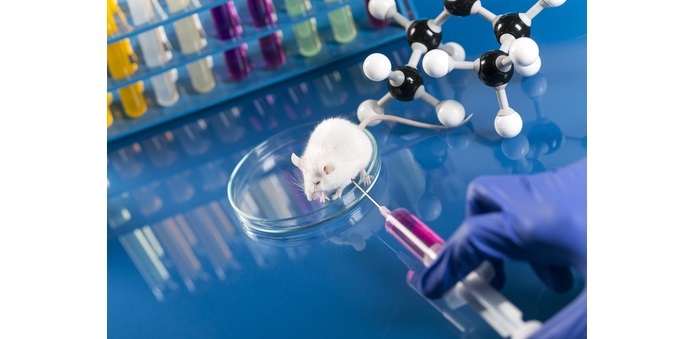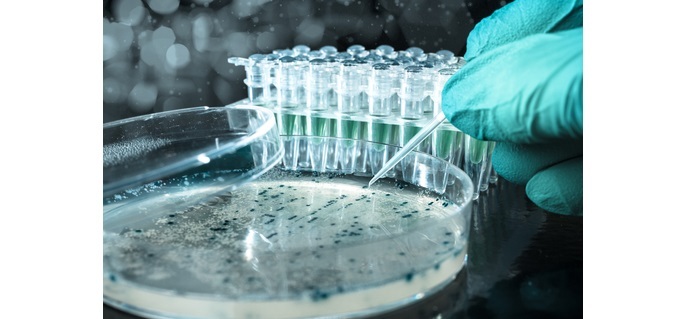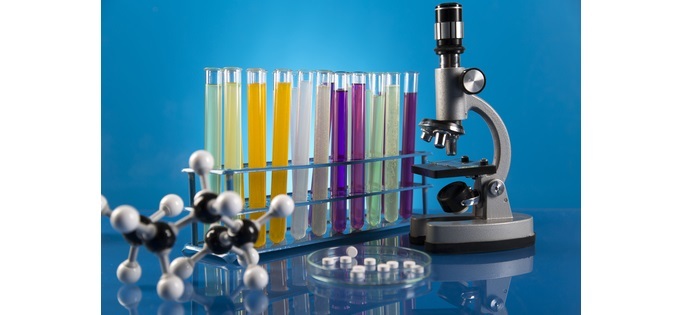
 Data Structure
Data Structure Networking
Networking RDBMS
RDBMS Operating System
Operating System Java
Java MS Excel
MS Excel iOS
iOS HTML
HTML CSS
CSS Android
Android Python
Python C Programming
C Programming C++
C++ C#
C# MongoDB
MongoDB MySQL
MySQL Javascript
Javascript PHP
PHP
- Selected Reading
- UPSC IAS Exams Notes
- Developer's Best Practices
- Questions and Answers
- Effective Resume Writing
- HR Interview Questions
- Computer Glossary
- Who is Who
Molecular Genetics and Biotechnology
Introduction
Basic molecular genetics research has created brand-new possibilities for illness diagnosis. The potential to translate research results into practical applications in industry is enormous.
A branch of biology that studies how variety in animals arises from variations in the structures or expression of DNA molecules is called Molecular Genetics. Genetic screens are frequently used in molecular genetics to "investigate" the structure and/or function of the genes in an organism's genome.
Cellular biology, molecular biology, biochemistry, and biotechnology, as well as traditional Mendelian inheritance, provide the foundation of the field of study. To connect a gene sequence to a particular symptom, researchers look for mutations in genes or intentionally cause abnormalities in genes.
The search for therapies and cures for numerous genetic diseases may be aided by the use of molecular genetics, a potent tool for connecting mutations to genetic abnormalities.

Central Dogma
The Central Dogma, which forms the cornerstone of all genetics, is crucial to the study of molecular genetics. According to the Central Dogma, DNA replicates itself, becomes RNA through transcription, and then becomes proteins through translation.
The genetic code is utilized to comprehend how RNA is translated into proteins along with the Central Dogma. The nucleus is where DNA replication and transcription from DNA to mRNA take place, and the ribosome is where RNA is translated into proteins.
The four base pairs that make up the genetic code?adenine, cytosine, guanine, and uracil?are redundant, which means that different combinations of these base pairs?which are read in triplicate?produce the same amino acid.
Techniques of Molecular Genetics
The study of genetics focuses on how biological features are passed down and vary throughout time. We have already mentioned that genetic research can be done without directly examining DNA. In fact, some of the best geneticists depended on the research of phenotypes, inheritance patterns, and their ratios in carefully planned crosses rather than any specialized knowledge of DNA.

Isolating Genomic DNA
Currently, molecular biology is frequently combined with traditional genetics to create molecular genetics, which involves the examination of DNA and other isolated macromolecules from an organism. The DNA or RNA that is transcribed from a specific gene is typically isolated and examined in molecular genetics investigations using a variety of techniques.
Detecting A Specific Sequence by PCR
A test tube-based technique for replicating DNA is called the Polymerase Chain Reaction (PCR). Chain reaction refers to the ability of this technology to make millions of copies of a DNA molecule by using each freshly replicated double helix as a template to synthesis two new DNA double helices. Here, "polymerase" refers to a DNA polymerase enzyme isolated and purified from bacteria. Hence, PCR is a very effective way to amplify DNA.
Restriction Digest and DNA Ligation
Enzymes found in numerous bacteria can cleave the double stranded DNA helix at certain DNA sequences after identifying the sequence. Site-specific restriction endonucleases, or simply "restriction enzymes," are the name of these enzymes, which naturally serve as a component of bacterial defences against viruses and other sources of foreign DNA. Researchers use restriction enzymes from various bacterial species, which can be acquired from a variety of commercial sources, to cut DNA at known sites.

Cloning DNA
Plasmids are extrachromosomal DNA components found in a variety of bacteria. These molecules are typically circular, double-stranded, tiny (a few thousand base pairs), independent replicators that can exist in large quantities within a cell. Plasmids can be exchanged during bacterial mating in the wild and are occasionally even exchanged across different species. Genes for pathogenicity and drug resistance are frequently found in plasmids.
Gel Electrophoresis
A DNA solution has no color and looks just like water, with the exception that it can become viscous at high concentrations. To find and examine DNA, methods like gel electrophoresis has been developed.
Blotting and Hybridization
Only when the majority of the DNA molecules are the same size, such as after a PCR reaction or restriction digestion of a plasmid, can DNA bands in an electrophoretic gel appear. At times, such as when chromosomal (genomic) DNA has undergone restriction digestion, the digest will contain a large number of fragments of varying sizes and will look more like a continuous smear of DNA than distinct bands.
Transgenic Operations
Using biotechnology, foreign DNA has been inserted into transgenic organisms. Thus, "foreign DNA" (the transgene) is defined as either recombinant DNA from the same species that has undergone laboratory manipulation before being reintroduced. The phrases genetically modified organism (GMO) and transgenic organism are frequently used interchangeably.
Forward Genetics
A molecular genetics technique called forward genetics is used to pinpoint the genes or genetic alterations that cause a particular phenotype. In a genetic test, people are tested for the desired trait after random mutations are produced using mutagens or transposons.
Mutagenesis is frequently followed by a secondary experiment in the form of selection. Using a fluorescent reporter or an antibiotic resistance gene, the cells can be altered to select just the mutants with the desired phenotype out of the non-mutants.
Reverse Genetics
Reverse genetics refers to molecular genetics techniques used to determine the phenotype caused by an intentional mutation in a gene of interest. The function of the unmutated version of the gene is inferred from the phenotype.
The gene of interest may experience random or deliberate mutations. Mutations can occur as a frameshift mutation brought on by nucleotide addition or deletion, a mis-sense mutation brought on by nucleotide substitution, or a complete addition or deletion of a gene or gene region.

